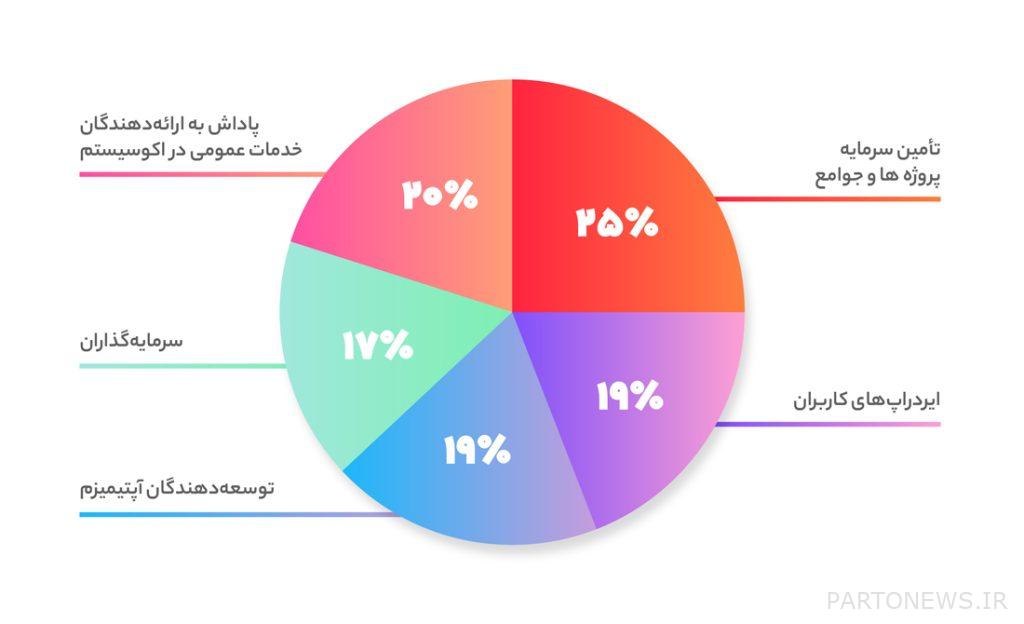What is optimism? – Digital currency

Ethereum was the first blockchain to introduce smart contract technology and decentralized applications (Dapp). Despite numerous competitors, this chain is still the first choice of many developers for developing decentralized applications. However, if you’ve only used this blockchain once, you’ve probably seen its transaction processing delays and high fees. This problem has solutions and Optimistic Rollups is one of these ways.
The problem we are talking about is somehow tied to the concept of ethereum scalability. With the influx of developers and users to use decentralized applications on this platform, we are witnessing an increase in network traffic and a slowdown in transaction processing. Weakness in scalability has caused an unreasonable increase in transaction fees and a decrease in Ethereum’s operational capacity.
Read more: What is Ethereum? Shopping training and wallets
Currently, migrating to other blockchains and using second layer solutions are the only options available to the users of this network. Since most Ethereum network users prefer to stay on this platform and benefit from its benefits, the best option is to use second layer solutions.
The Optimism project and optimistic roll-ups are one of these solutions that have attracted the attention of many developers and users; For this reason, in this article, while introducing this second layer solution, we are also going to briefly explain its working method and point out its advantages and disadvantages and examine the reasons for its popularity. If you are also interested in new technologies on the Ethereum platform, stay with us until the end of the article.
Read more: What is blockchain? Simple explanation with example + video
Second layer solutions and fix Ethereum’s scalability problem
You can think of Ethereum as a decentralized computer that operates on thousands of nodes around the world. Each node must store and process the data distributed in the network. This activity requires a lot of work and time; For this reason, currently the Ethereum network can process about 15 transactions per second, which is a very small number compared to the processing of more than 50,000 transactions in a network like Visa.
Ethereum, like some other blockchains, has accepted this problem in exchange for providing security and decentralization; Because upgrading the network to process more data is only possible by upgrading nodes, and since not everyone can get advanced equipment, forcing nodes to upgrade equipment only reduces the number of users running a node. The result of this will be nothing but concentration and increasing the possibility of censorship.
read more: Proof of work and proof of stake, concept and differences
One of the main solutions to increase the speed of nodes is to update the transaction processing mechanism in the network, which will be done with the full implementation of Ethereum 2.0. After this change, the nodes validate the transactions by means of a consensus mechanism called proof of stake and by staking the native currency of the Ethereum network.
This change is going to transform the foundation of the network; For this reason, in order to remove the defects and obstacles of the system, this change should be implemented step by step and over several years. The first stage of these changes, called Beacon Chain, has started its work since 2020; But the next two stages have not yet been implemented and it is expected that they will not reach the final stage until 2023.
Until these massive changes are implemented in the Ethereum network, faster solutions are needed to increase the scalability of the platform. In this situation, only the solutions of the second layer are the solution to the problem, and among them, optimistic roll-ups are the first.
Read more: What is Ethereum 2.0? ; Everything you need to know
What is optimism?
Optimism is the first protocol that proposed the idea of using Optimistic rollups technology. This project improves the speed and efficiency of the network by using advanced data compression techniques and processing them on another layer of the blockchain. Optimism mechanism relies on roll-ups. If we want to express the concept of rollup very simply, we must say that this popular solution executes transactions outside the main blockchain and sends transaction data to the main network with the help of smart contracts.
The word roll-up literally means “to pipe”. Rollups can be considered a list of transactions that are validated outside of the main chain and according to its principles. Then, a summary of these compressed data and occupying less space compared to the original data are sent to the main chain. This solution will be much faster and cheaper compared to processing a large number of transactions in the main layer.
By using Optimism, transactions spend a short amount of time in the queue. In this case, the sender of the transaction also pays a lower fee. In this technology, several transactions are collected in the form of a batch on another layer of the blockchain and finally, the receipts of the transactions are sent to the main blockchain of Ethereum.
Also read: Overview of Ethereum second layer solutions
A study by Dune Analytics shows that using Optimism reduces Ethereum transaction fees by 129 times. Also, estimates show that optimistic rollups can improve network scalability by 10 to 100 times.
It doesn’t take much time to set up optimism; But its success has been the beginning of the cooperation of this collection with reliable protocols such as Synthetix and Uniswap. Names such as MetaMask, ChanLink, Coinbase, Rari Capital, 1inch, Aave and Curve are also seen in the list of collaborations of this project.
The idea of Optimism was proposed in June 2019 and its test network was released in October. However, the launch of the main network took until January 2021. Needless to say, the version compatible with the Ethereum Virtual Machine (EVM) was also presented a year later, in October 2021. Optimism’s main network finally started its work in December 2021. We should also point out that currently, this protocol does not have a native token and uses Ether (ETH) for payment.
How does optimism work?
As we mentioned, the Optimism protocol is based on optimistic rollups. Optimistic rollups are actually smart contracts that receive transaction data from the first layer of Ethereum and send it to the second layer, and finally, receive the results of transaction processing in the form of compressed and low-volume data.
In the second layer, transactions are sent to the sequencer. Sequencers immediately provide a signed receipt that guarantees the execution and order of the transaction. Now, the question may be raised that when processing is not done in the framework of mathematical calculations, how can you ensure the security of transactions?
In order to encourage users to behave honestly, sequencers are rewarded for correct transaction processing and penalized if they confirm a malicious transaction. At the same time, anyone who can detect a malicious transaction gets a part of the sequencer’s fine as a reward.
If the sequencers do not work honestly or manipulate the order of the transaction, the user who detects the tampering can deliver the signed receipt to the adjudicator smart contract. If the referee finds that the sequencer was not committed and honest, he will be fined. Needless to say, the amount of the fine is deducted from the shares that the sequencer has already invested in the network; Therefore, we can consider optimistic roll-ups as a proof-of-stake system in smaller dimensions.
Characteristics of optimism
So far you have noticed that the main feature of Optimism is faster and more cost-effective transactions. Next, we mention other important features of optimism.
- Fast and cheap transactions
The processing of individual transactions in the first layer is time-consuming, and most nodes in the network must also check the final result of the transaction. This process takes a relatively long time and causes nodes to give processing priority to transactions that pay more fees for validation.
In contrast, optimistic rollups off-chain validate work and transactions in batches. Also, in this technology, transactions are considered correct by default, and much time is not wasted on complex processing of cryptographic codes.
In optimistic roll-ups, we are not faced with complex and time-consuming calculations; Therefore, we can see much faster transactions. In this case, the user will not need to pay extra to increase the processing speed.
Optimistic rollups, like most blockchain-based technologies, use a reward-and-penalty policy to encourage nodes to act honestly and ensure network safety.
As we mentioned earlier, in optimistic rollups, each node must stake an amount before starting work. If he makes ninety mistakes, he faces the risk of losing his capital. This penalty condition makes it more expensive for nodes to verify malicious transactions.
Additionally, before the final results are recorded on the Ethereum main layer, validators have a week to identify the incorrect transaction. This duration is considered for the complete safety of the processes performed on the second Optimistic layer.
Optimism Token (OP)

Optimism token with the abbreviation OP is one of the newest tokens released in the space of digital currencies. The OP token plays a governance role for this second layer network. This currency was distributed on May 31, 2022 (10 Khordad 1401) and in collective airdrop among users and contributors of Dao Optimism.
It should be noted that this airdrop includes only 5% of the 19% share allocated to OP token airdrops, and there is still 14% of this amount left, which is supposed to be distributed in the next airdrops among community participants and users loyal to Optimism.
In general, the total supply of this token is 4 billion 294 million 967 thousand 296 units, of which 20% will be used to reward public service providers in the ecosystem, 25% will be used to fund Optimism projects and communities, 19% will be used for user airdrops, 19% will be given to Optimism developers and the remaining 17% allocated to investors.

In general, it can be said that any participation in the network, including investment, token maintenance, protocol development, voting on proposed proposals, and community membership is subject to receiving the benefits of the OP token. At the time of writing this article (mid-September 1401), out of a total of about 4.2 billion units of tokens, only about 2 million OP tokens are in circulation. This amount, with a market value of approximately 250.5 million dollars, has placed the OP token in the 113th rank of the Coinmarketcap table.
Conclusion
In this article, we learned about Optimism protocol and Optimistic roll-ups technology; A technology that is considered one of the famous and widely used second layer solutions of Ethereum. As we mentioned, the goal of the Optimism protocol is to improve scalability and reduce the time and cost required to process Ethereum transactions. In this article, referring to Ethereum’s scalability problem, we showed how and with what features optimistic roll-ups can be a suitable solution for it.
The future of this protocol seems bright. Optimism has a lot of funds to advance its project. In March 2022, the project received $150 million in capital with the support of prestigious investment firms Andreessen Horowitz and Paradigm, which increased the value of the Optimism startup to $1.65 billion. Optimism’s roadmap also foresees various updates such as integration with sharding technology and decentralization of the sequencer mechanism.
In addition, Vitalik Buterin, the creator of Ethereum, has talked about rollups to solve the problem of scalability in the future. In 2021, at the National Blockchain Week in Shanghai, he pointed out that optimistic rollups are simpler and faster, and are a better option in the short term. However, we should not forget that Butrin’s main project, Ethereum 2.0, is on its way, and if fully launched successfully, it can create a tough competition and challenge for Ethereum rollups.

